Economic Growth Assignment - ECO101, Semester 1, University Name
VerifiedAdded on 2023/06/07
|8
|809
|443
Homework Assignment
AI Summary
This economics assignment delves into the factors influencing economic growth, analyzing the impact of events like earthquakes and wars on capital stock and labor force. It explores the effects of diseases and taxes on steady states, savings, and disposable income. The assignment further examines the implications of lump-sum taxes on capital levels and savings, illustrating how changes in tax policies can shift steady-state conditions. Finally, it investigates the influence of wealth on savings incentives and the resulting shifts in steady-state levels, using graphical representations to explain economic models and concepts. The student provides detailed explanations and diagrams to support their analysis, offering a comprehensive understanding of economic growth dynamics.
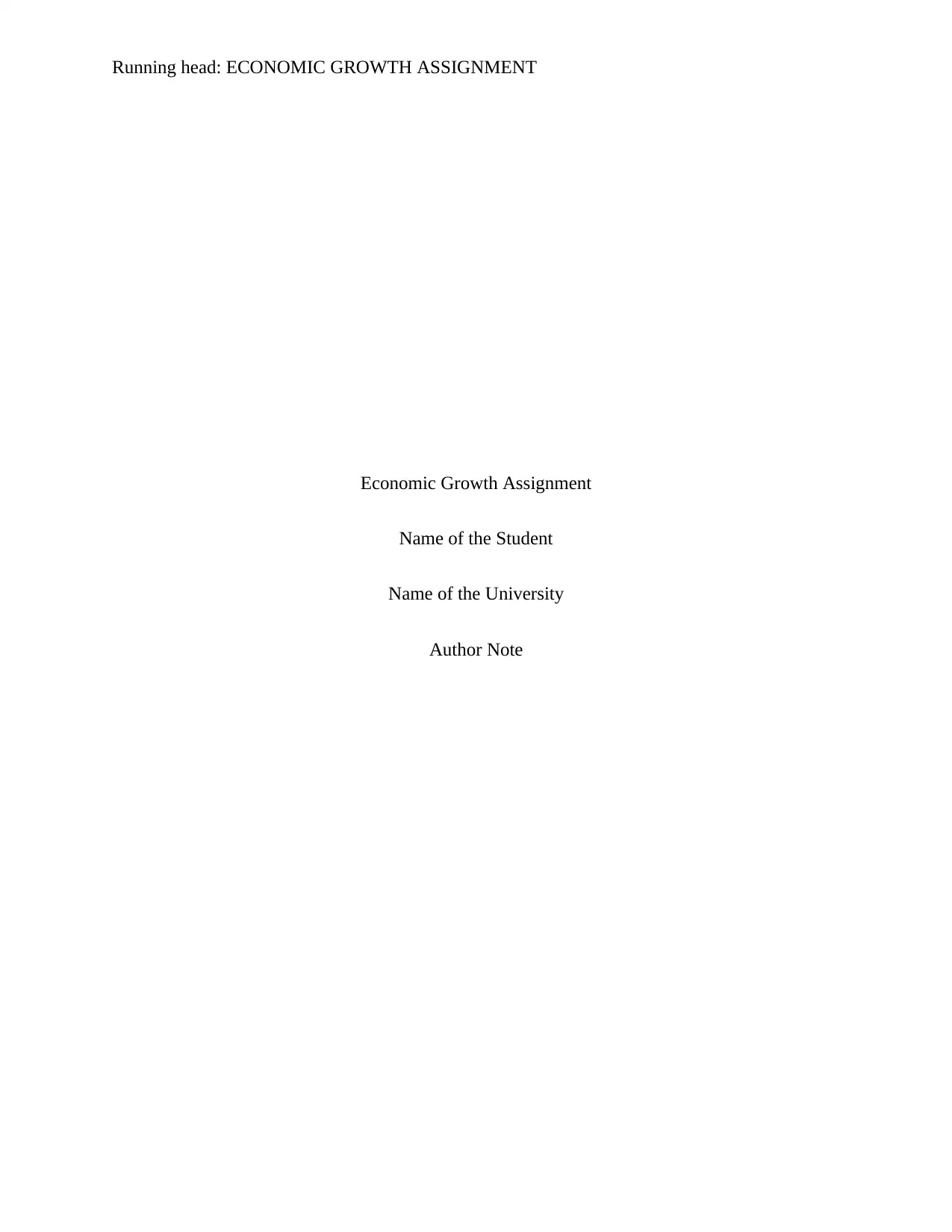
Running head: ECONOMIC GROWTH ASSIGNMENT
Economic Growth Assignment
Name of the Student
Name of the University
Author Note
Economic Growth Assignment
Name of the Student
Name of the University
Author Note
Paraphrase This Document
Need a fresh take? Get an instant paraphrase of this document with our AI Paraphraser
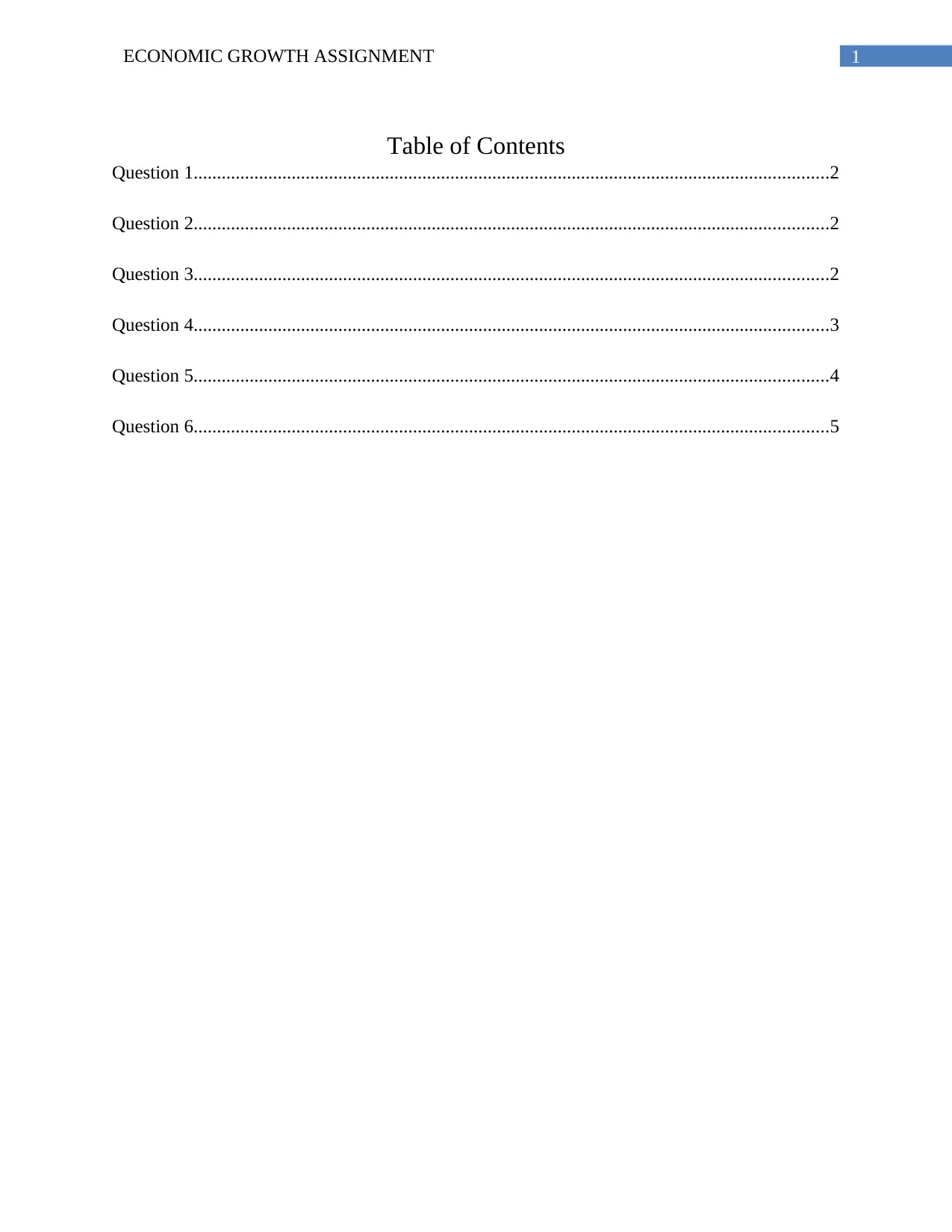
1ECONOMIC GROWTH ASSIGNMENT
Table of Contents
Question 1........................................................................................................................................2
Question 2........................................................................................................................................2
Question 3........................................................................................................................................2
Question 4........................................................................................................................................3
Question 5........................................................................................................................................4
Question 6........................................................................................................................................5
Table of Contents
Question 1........................................................................................................................................2
Question 2........................................................................................................................................2
Question 3........................................................................................................................................2
Question 4........................................................................................................................................3
Question 5........................................................................................................................................4
Question 6........................................................................................................................................5
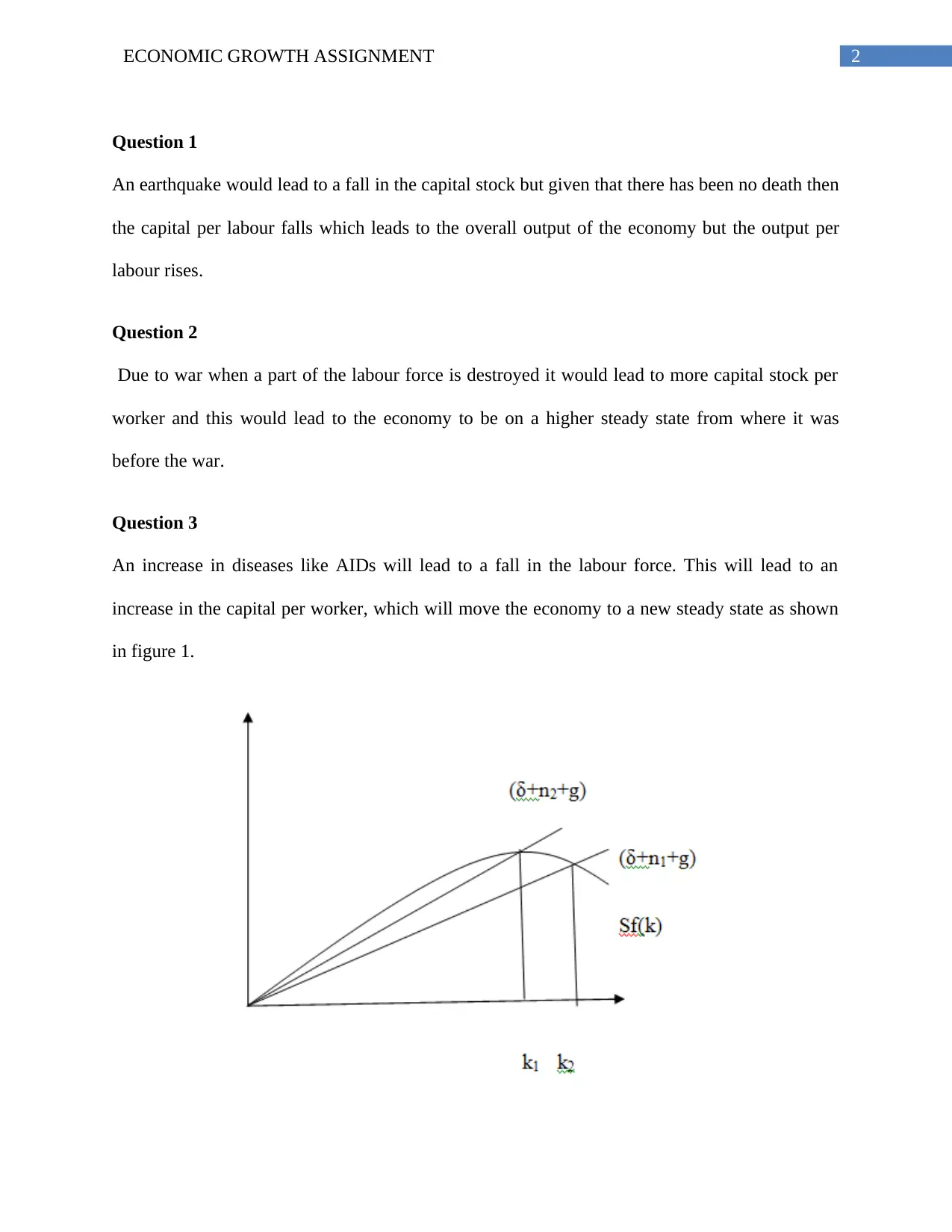
2ECONOMIC GROWTH ASSIGNMENT
Question 1
An earthquake would lead to a fall in the capital stock but given that there has been no death then
the capital per labour falls which leads to the overall output of the economy but the output per
labour rises.
Question 2
Due to war when a part of the labour force is destroyed it would lead to more capital stock per
worker and this would lead to the economy to be on a higher steady state from where it was
before the war.
Question 3
An increase in diseases like AIDs will lead to a fall in the labour force. This will lead to an
increase in the capital per worker, which will move the economy to a new steady state as shown
in figure 1.
Question 1
An earthquake would lead to a fall in the capital stock but given that there has been no death then
the capital per labour falls which leads to the overall output of the economy but the output per
labour rises.
Question 2
Due to war when a part of the labour force is destroyed it would lead to more capital stock per
worker and this would lead to the economy to be on a higher steady state from where it was
before the war.
Question 3
An increase in diseases like AIDs will lead to a fall in the labour force. This will lead to an
increase in the capital per worker, which will move the economy to a new steady state as shown
in figure 1.
⊘ This is a preview!⊘
Do you want full access?
Subscribe today to unlock all pages.

Trusted by 1+ million students worldwide
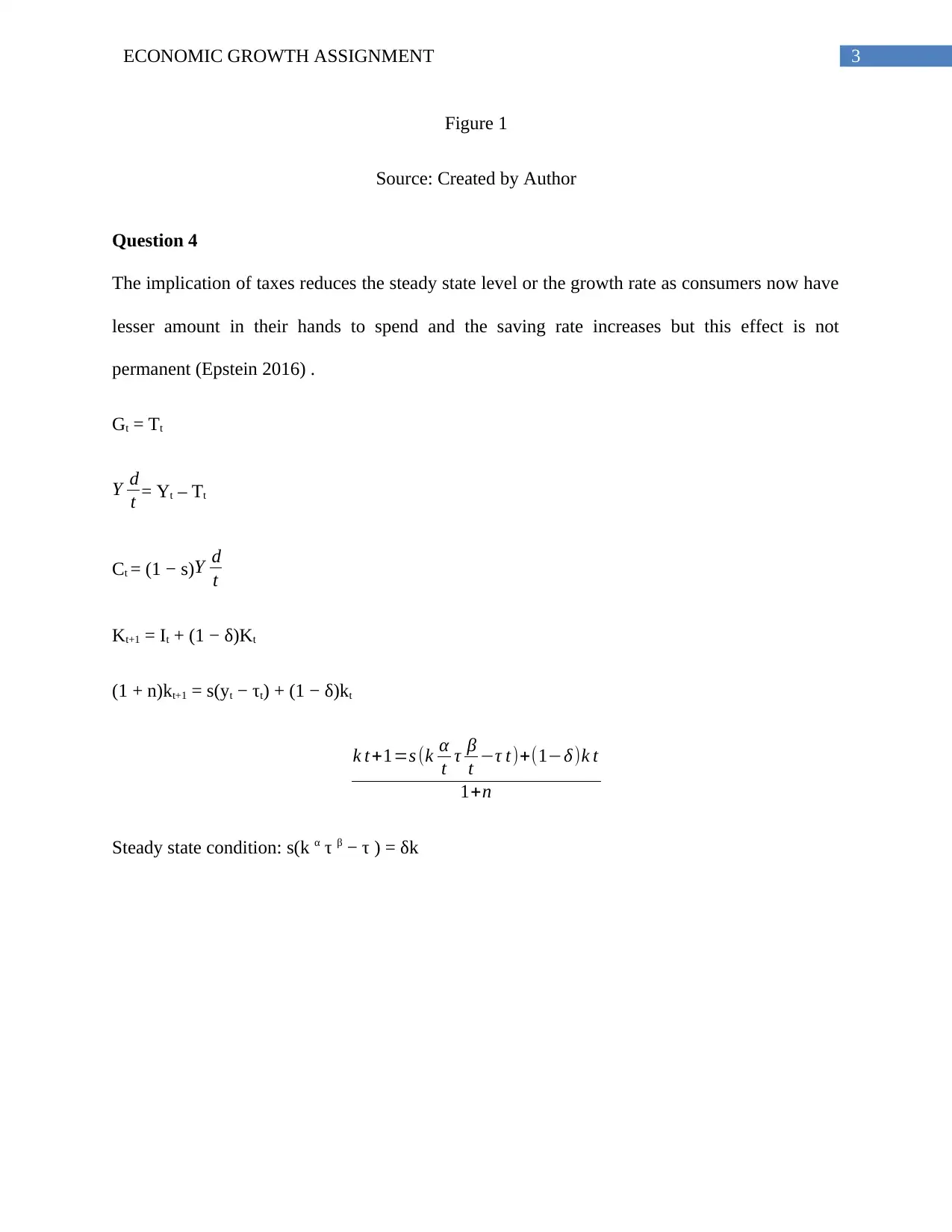
3ECONOMIC GROWTH ASSIGNMENT
Figure 1
Source: Created by Author
Question 4
The implication of taxes reduces the steady state level or the growth rate as consumers now have
lesser amount in their hands to spend and the saving rate increases but this effect is not
permanent (Epstein 2016) .
Gt = Tt
Y d
t = Yt – Tt
Ct = (1 − s)Y d
t
Kt+1 = It + (1 − δ)Kt
(1 + n)kt+1 = s(yt − τt) + (1 − δ)kt
k t+1=s (k α
t τ β
t −τ t)+(1−δ)k t
1+n
Steady state condition: s(k α τ β − τ ) = δk
Figure 1
Source: Created by Author
Question 4
The implication of taxes reduces the steady state level or the growth rate as consumers now have
lesser amount in their hands to spend and the saving rate increases but this effect is not
permanent (Epstein 2016) .
Gt = Tt
Y d
t = Yt – Tt
Ct = (1 − s)Y d
t
Kt+1 = It + (1 − δ)Kt
(1 + n)kt+1 = s(yt − τt) + (1 − δ)kt
k t+1=s (k α
t τ β
t −τ t)+(1−δ)k t
1+n
Steady state condition: s(k α τ β − τ ) = δk
Paraphrase This Document
Need a fresh take? Get an instant paraphrase of this document with our AI Paraphraser
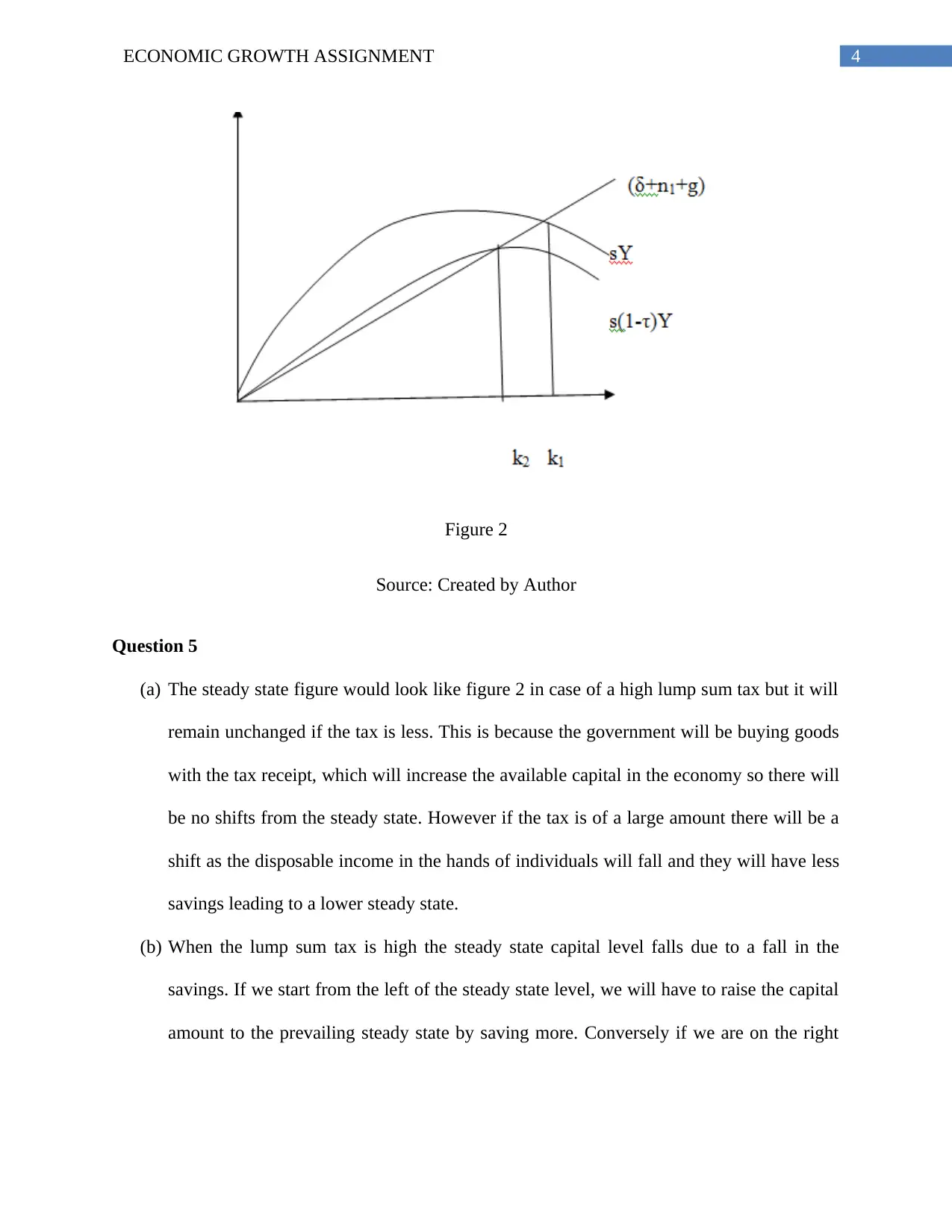
4ECONOMIC GROWTH ASSIGNMENT
Figure 2
Source: Created by Author
Question 5
(a) The steady state figure would look like figure 2 in case of a high lump sum tax but it will
remain unchanged if the tax is less. This is because the government will be buying goods
with the tax receipt, which will increase the available capital in the economy so there will
be no shifts from the steady state. However if the tax is of a large amount there will be a
shift as the disposable income in the hands of individuals will fall and they will have less
savings leading to a lower steady state.
(b) When the lump sum tax is high the steady state capital level falls due to a fall in the
savings. If we start from the left of the steady state level, we will have to raise the capital
amount to the prevailing steady state by saving more. Conversely if we are on the right
Figure 2
Source: Created by Author
Question 5
(a) The steady state figure would look like figure 2 in case of a high lump sum tax but it will
remain unchanged if the tax is less. This is because the government will be buying goods
with the tax receipt, which will increase the available capital in the economy so there will
be no shifts from the steady state. However if the tax is of a large amount there will be a
shift as the disposable income in the hands of individuals will fall and they will have less
savings leading to a lower steady state.
(b) When the lump sum tax is high the steady state capital level falls due to a fall in the
savings. If we start from the left of the steady state level, we will have to raise the capital
amount to the prevailing steady state by saving more. Conversely if we are on the right
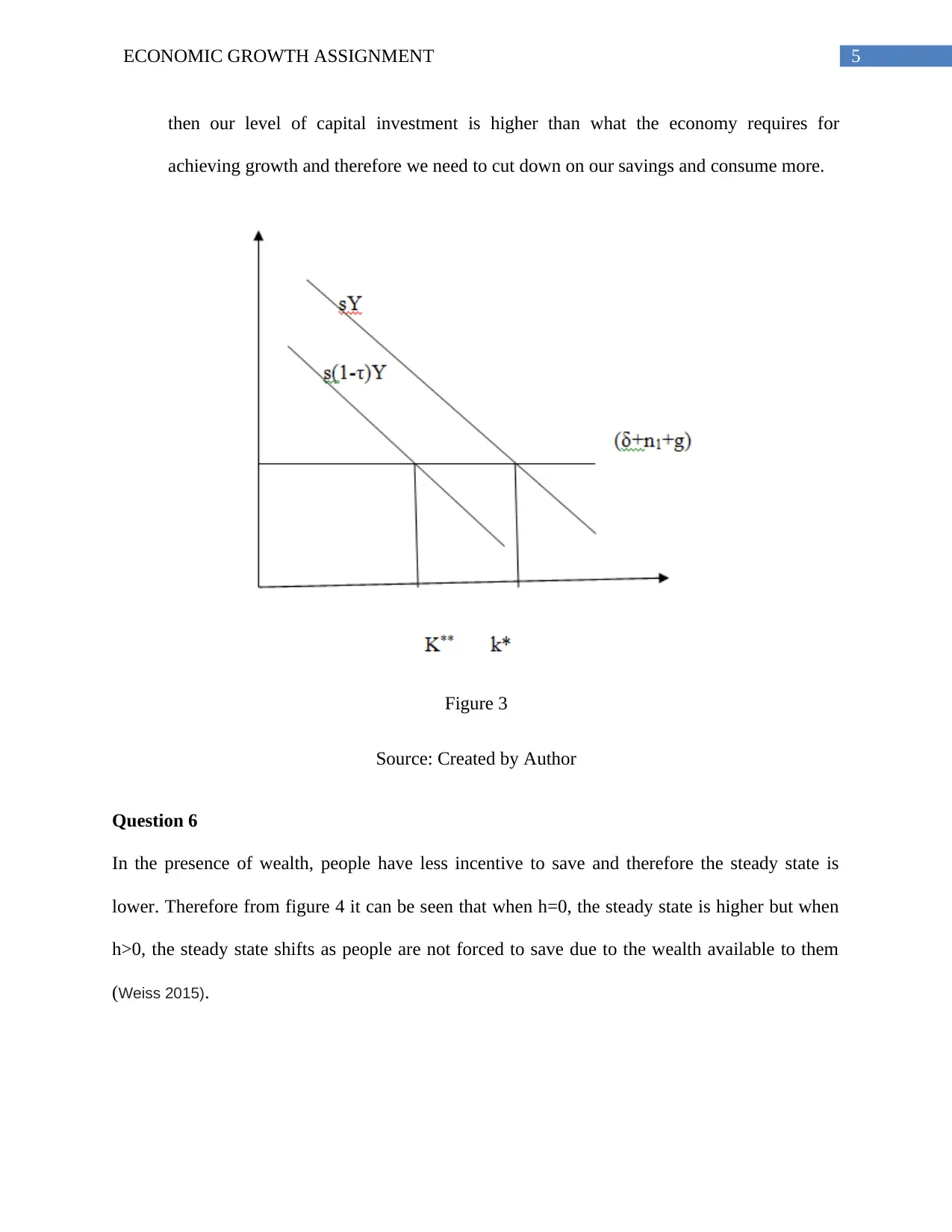
5ECONOMIC GROWTH ASSIGNMENT
then our level of capital investment is higher than what the economy requires for
achieving growth and therefore we need to cut down on our savings and consume more.
Figure 3
Source: Created by Author
Question 6
In the presence of wealth, people have less incentive to save and therefore the steady state is
lower. Therefore from figure 4 it can be seen that when h=0, the steady state is higher but when
h>0, the steady state shifts as people are not forced to save due to the wealth available to them
(Weiss 2015).
then our level of capital investment is higher than what the economy requires for
achieving growth and therefore we need to cut down on our savings and consume more.
Figure 3
Source: Created by Author
Question 6
In the presence of wealth, people have less incentive to save and therefore the steady state is
lower. Therefore from figure 4 it can be seen that when h=0, the steady state is higher but when
h>0, the steady state shifts as people are not forced to save due to the wealth available to them
(Weiss 2015).
⊘ This is a preview!⊘
Do you want full access?
Subscribe today to unlock all pages.

Trusted by 1+ million students worldwide
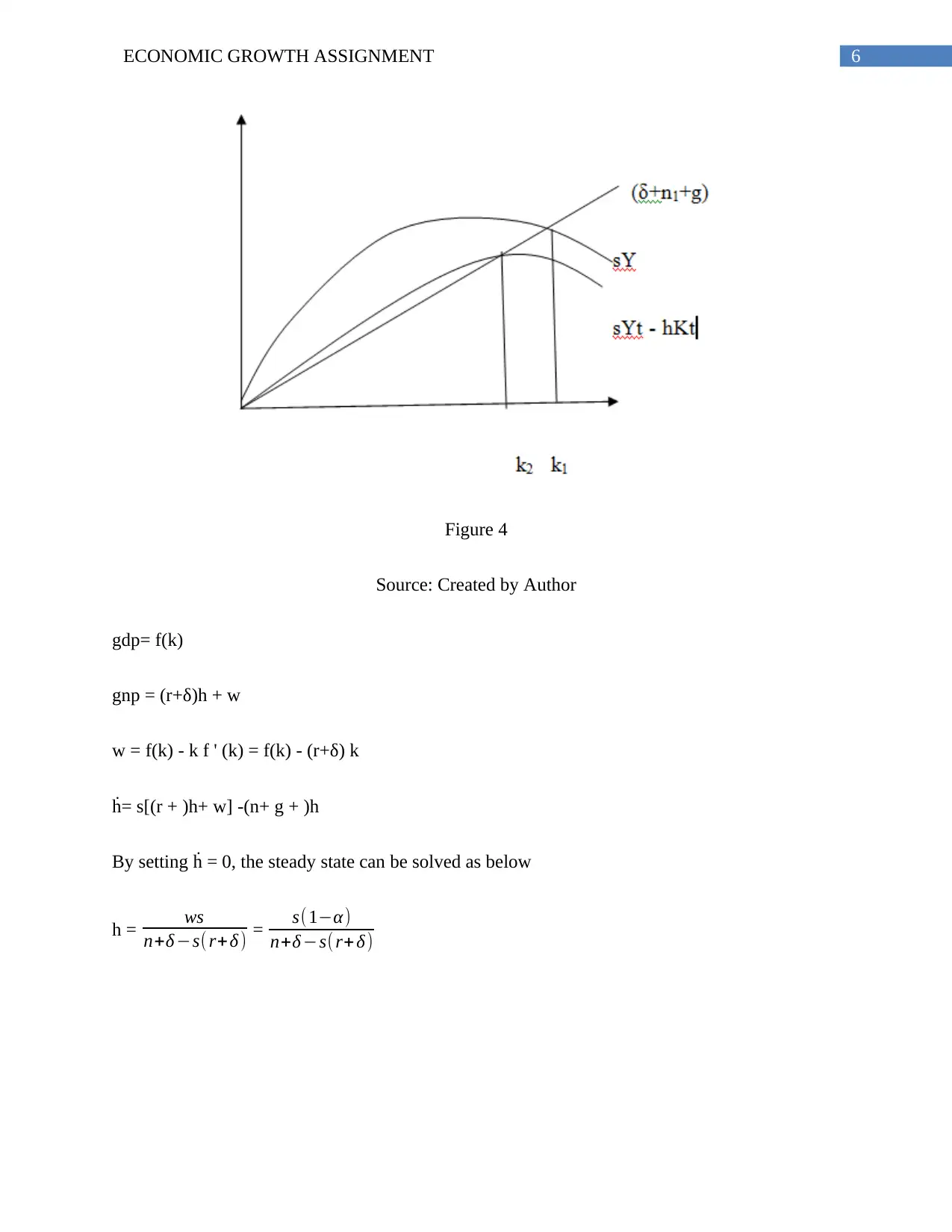
6ECONOMIC GROWTH ASSIGNMENT
Figure 4
Source: Created by Author
gdp= f(k)
gnp = (r+δ)h + w
w = f(k) - k f ' (k) = f(k) - (r+δ) k
ḣ= s[(r + )h+ w] -(n+ g + )h
By setting ḣ = 0, the steady state can be solved as below
h = ws
n+δ −s( r+ δ ) = s(1−α)
n+δ −s( r+ δ )
Figure 4
Source: Created by Author
gdp= f(k)
gnp = (r+δ)h + w
w = f(k) - k f ' (k) = f(k) - (r+δ) k
ḣ= s[(r + )h+ w] -(n+ g + )h
By setting ḣ = 0, the steady state can be solved as below
h = ws
n+δ −s( r+ δ ) = s(1−α)
n+δ −s( r+ δ )
Paraphrase This Document
Need a fresh take? Get an instant paraphrase of this document with our AI Paraphraser
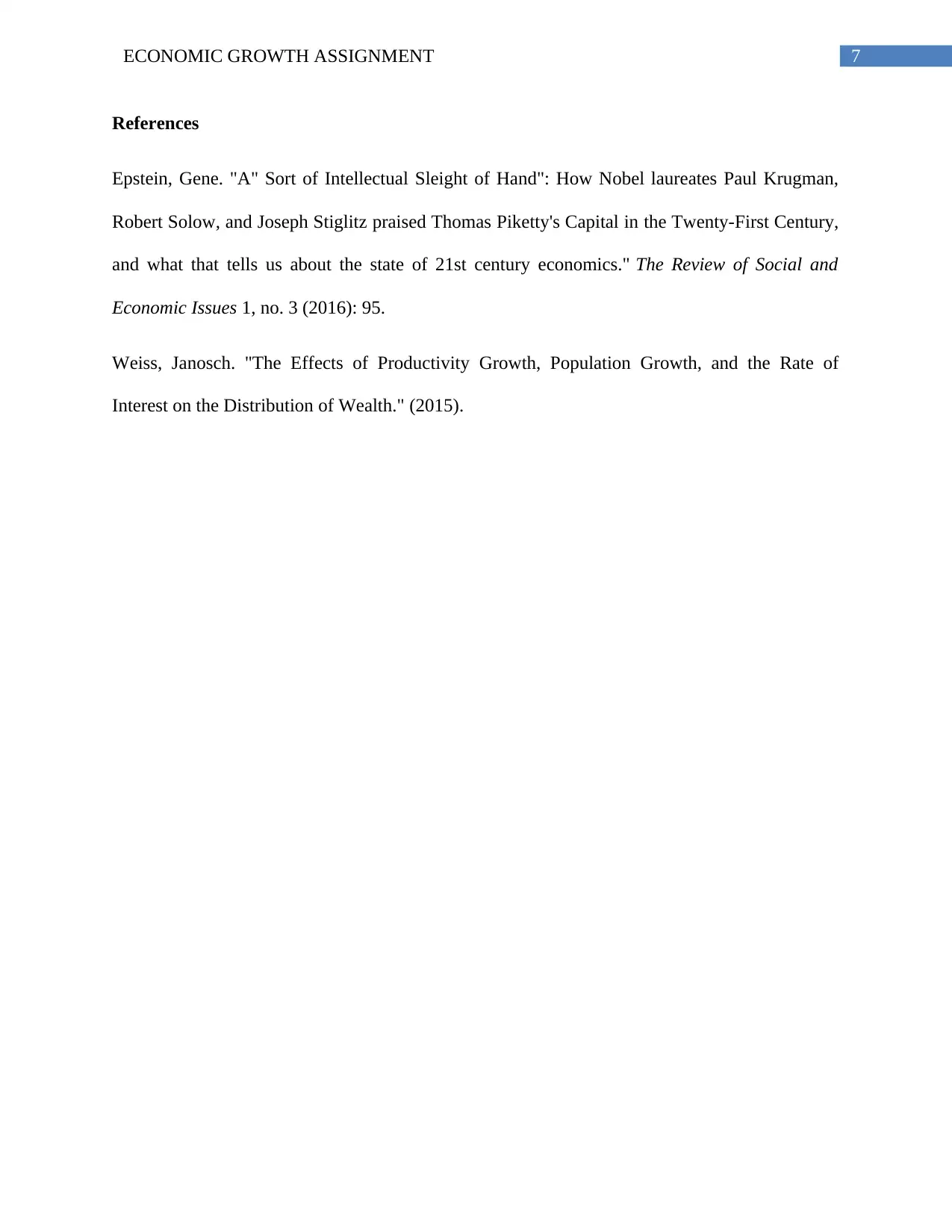
7ECONOMIC GROWTH ASSIGNMENT
References
Epstein, Gene. "A" Sort of Intellectual Sleight of Hand": How Nobel laureates Paul Krugman,
Robert Solow, and Joseph Stiglitz praised Thomas Piketty's Capital in the Twenty-First Century,
and what that tells us about the state of 21st century economics." The Review of Social and
Economic Issues 1, no. 3 (2016): 95.
Weiss, Janosch. "The Effects of Productivity Growth, Population Growth, and the Rate of
Interest on the Distribution of Wealth." (2015).
References
Epstein, Gene. "A" Sort of Intellectual Sleight of Hand": How Nobel laureates Paul Krugman,
Robert Solow, and Joseph Stiglitz praised Thomas Piketty's Capital in the Twenty-First Century,
and what that tells us about the state of 21st century economics." The Review of Social and
Economic Issues 1, no. 3 (2016): 95.
Weiss, Janosch. "The Effects of Productivity Growth, Population Growth, and the Rate of
Interest on the Distribution of Wealth." (2015).
1 out of 8
Related Documents
Your All-in-One AI-Powered Toolkit for Academic Success.
+13062052269
info@desklib.com
Available 24*7 on WhatsApp / Email
![[object Object]](/_next/static/media/star-bottom.7253800d.svg)
Unlock your academic potential
Copyright © 2020–2025 A2Z Services. All Rights Reserved. Developed and managed by ZUCOL.




